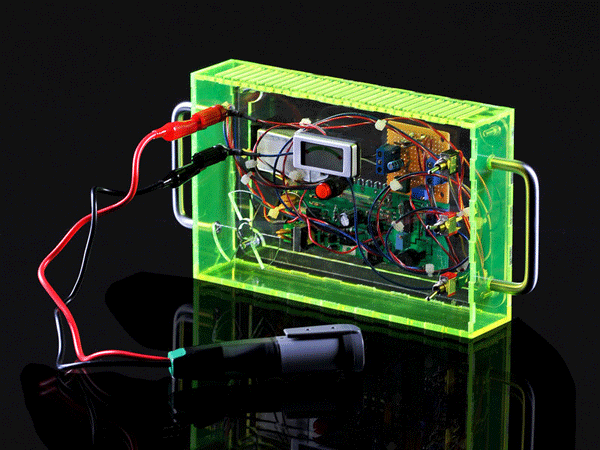
MAKE contributing writer John Iovine has shared a number of his project builds on the pages of MAKE, but his specialty is Geiger counters. He’s been designing, making, and selling them for 15 years through his company, Images Scientific Instruments . In the latest issue of MAKE, Volume 29, John shares his expert step-by-step tutorial for making your own Geiger counter. And really, who doesn’t need a Geiger counter in their toolbox? There’s radiation in everyday household items, like Fiesta dishes, bananas, and kitty litter, making for interesting experimentation.
From the project intro:
They’re fundamentally simple devices; you just need voltage high enough to run the Geiger-Müller (GM) tube. Anyone can design a counter that will work somewhat, but it’s hard to make one that’s reliable and long-lasting, because the electronics are so touchy.
Last year I was redesigning my basic Geiger counter circuit when the earthquake, tsunami, and nuclear crisis hit Japan. We sold out immediately, and I was so swamped with orders that I had to put my improved design on hold. But I finally finished, and here it is.
You can easily configure this counter to use a variety of GM tubes. Not only will it output a click and an LED flash with each radioactive particle detected, you can also connect it to analog or digital radiation-level meters, a PC for plotting data, a portable SD-card data logger for placing somewhere without a computer, and a true random number generator. It’s also compatible with the Radiation Network (http://radiationnetwork.com), so you can share your readings with others worldwide.
John’s Geiger counter project is available in full on Make: Projects. Head on over, check it out, and build your own.
To make gathering materials easier, the Maker Shed put together an Alpha Particle Detecting Geiger Counter Kit, which includes everything you need except the voltmeter, data logger, enclosure, and batteries. (The Shed also has a simpler version available.)
And for a good read, check out MAKE editor Paul Spinrad’s interview with John titled Geiger Counter Sanity Check.
From the pages of MAKE Volume 29:
We have the technology (to quote The Six Million Dollar Man), but commercial tools for exploring, assisting, and augmenting our bodies really can approach a price tag of $6 million. Medical and assistive tech manufacturers must pay not just for R&D, but for expensive clinical trials, regulatory compliance, and liability — and doesn’t help with low pricing that these devices are typically paid for through insurance, rather than purchased directly. But many gadgets that restore people’s abilities or enable new “superpowers” are surprisingly easy to make, and for tiny fractions of the costs of off-the-shelf equivalents. MAKE Volume 29, the “DIY Superhuman” issue, explains how.
ADVERTISEMENT








